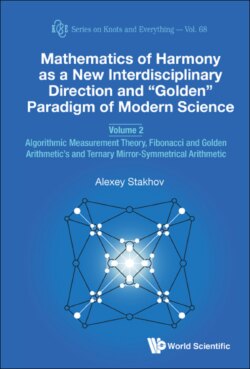Читать книгу Mathematics of Harmony as a New Interdisciplinary Direction and “Golden” Paradigm of Modern Science - Alexey Stakhov - Страница 31
На сайте Литреса книга снята с продажи.
1.10.3. Optimal (n, k, 1)-algorithm
ОглавлениеThe operation of the optimal (n, k, 1)-algorithm can be demonstrated by using the arithmetic square (Table 1.1). Indeed, for the given n and k, the value of the efficiency function F(n, k) is at the intersection of the nth column and the kth row of the arithmetic square (see Table 1.1).
The first step of the optimal (n, k, 1)-algorithm is as follows. The coordinates of the application points of k IE on the segment AB (the points C1, C2, …, Cj, Cj+i, …, Ck) relative to point A (Fig. 1.8) are in the nth column of the arithmetic square (Table 1.1), that is,
If after the first step of the (n, k, 1)-algorithm, the jth IE turned to be to the left of point X, and the remaining (k – j) IE turned to be to the right of point X, then the uncertainty interval relative to point X decreases to the segment Cj Cj+1. The length of this segment is equal to F(n – 1, j) This binomial coefficient is at the intersection of the (n – 1)th column and jth row of the arithmetic square (Table 1.1). To find the binomial coefficient F(n – 1, j) we must move from the initial coefficient F(n, k) in the one column to the left (we “lost” one step) and the (k – j) rows up (we “lost” (k – j) IE).
In the second step, we take the point Cj for the new beginning of coordinates. In this case, the second step consists in enclosing the j IE to some points D1, D2, …, Dj of the new uncertainty interval CjCj+1. The coordinates of the points D1,D2, …,Dj relative to the new beginning of coordinates (the point Cj) are at the(n – 1) th columns of the arithmetic square above the binomial coefficient F(n – 1, j), that is,
This process ends when either all the steps of the measurement algorithm or all the indicatory elements will be exhausted.
